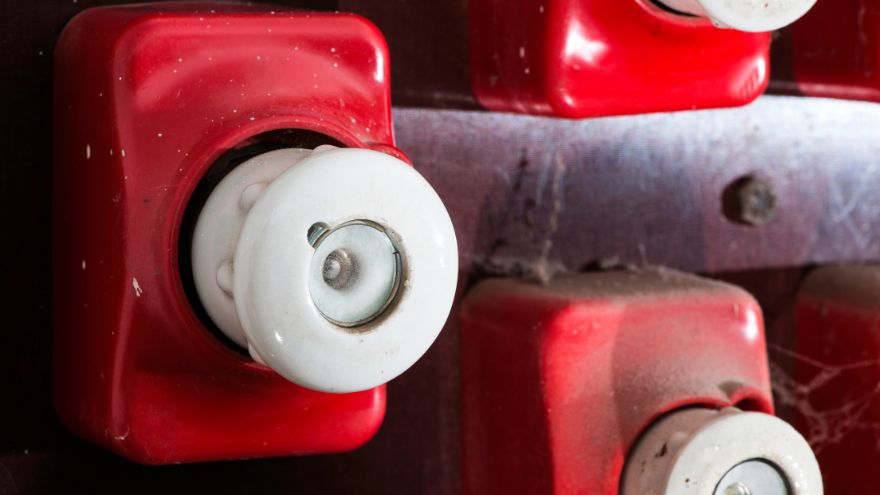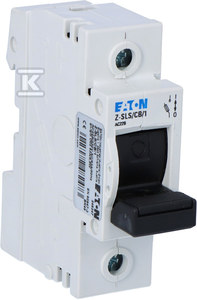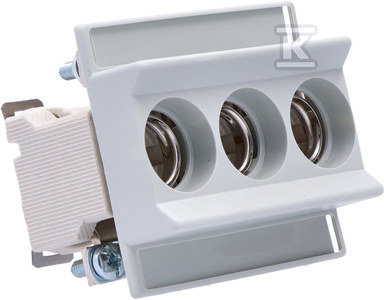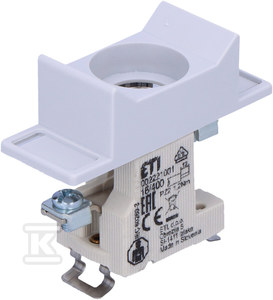Fuse sockets are one of the most important elements of electrical installations, mounted in switchboards. They are necessary to ensure correct installation of fuses and proper operation of protection of electrical circuits against current overload and short circuit. You don't have to be an electrician to know what a fuse socket looks like. Anyone who has ever checked or replaced a fuse (actually the fuse insert, i.e. part of the fuse) has had contact with the fuse socket. Find out what types of fuse sockets there are and which fuse socket to choose for your electrical installation.

Check the fuse socket at the Onninen wholesaler
What types of fuse sockets are there?
 Fuse sockets (also known as fuse bases ) used in domestic and industrial electrical installations differ in terms of parameters such as:
Fuse sockets (also known as fuse bases ) used in domestic and industrial electrical installations differ in terms of parameters such as:
- size,
- number of poles,
- construction material,
- rated voltage,
- rated current,
- method/place of installation,
- presence of cover.
The fuse socket structure is usually made of porcelain with excellent insulating properties and high resistance to mechanical damage. Manufacturers use plastic slightly less often.
 The sockets vary in size. Most fuse sockets are designed to work with D type fuses (see e.g. D fuse socket ) and small D0 type fuses. In our wholesale store you will also find products dedicated to low-voltage NH fuses, such as the NH fuse base . The NH symbol denotes low voltage fuses with high short-circuit breaking capacity. Their short-circuit capacity often exceeds 100 kA, so they are used in virtually all low-voltage networks.
The sockets vary in size. Most fuse sockets are designed to work with D type fuses (see e.g. D fuse socket ) and small D0 type fuses. In our wholesale store you will also find products dedicated to low-voltage NH fuses, such as the NH fuse base . The NH symbol denotes low voltage fuses with high short-circuit breaking capacity. Their short-circuit capacity often exceeds 100 kA, so they are used in virtually all low-voltage networks.
A popular division of fuse sockets concerns the method and place of installation. In this respect, there are three basic types of fuse sockets.
- Rail fuse sockets (also known as DIN rail fuse sockets) - intended for switchboards with modular equipment. They make it easier to match elements and make changes. Individual models are compatible with specific types of rails. DIN mounting rails are an increasingly common solution in modern installations.
- Surface-mounted (also known as panel-mount) fuse sockets – intended for surface mounting, marked with the letters NT or N/T. Due to the method of use, they require appropriate protection in the form of a closed housing.
- Panel fuse sockets (also known as behind-board fuse sockets) - found mainly in old installations.
Finally, it is worth mentioning the role of the cover. The cover protects the fuse against mechanical damage and the user against accidental touching of live parts.
How to choose the right fuse socket?
 The parameters of the fuse socket must meet the requirements of a specific installation - domestic or industrial, because they differ significantly in terms of power and load. Please remember that the fuse socket is only a part of the entire set, called "fuse". When selecting a fuse base, you must take into account the parameters of the fuse insert (fuse link), fuse carrier (fuse head), caliber insert and any covers. Please check the technical data of each product carefully!
The parameters of the fuse socket must meet the requirements of a specific installation - domestic or industrial, because they differ significantly in terms of power and load. Please remember that the fuse socket is only a part of the entire set, called "fuse". When selecting a fuse base, you must take into account the parameters of the fuse insert (fuse link), fuse carrier (fuse head), caliber insert and any covers. Please check the technical data of each product carefully!
Fuse sockets at the Onninen wholesaler
The Onninen electrical wholesaler offers various types of fuse sockets for use in both domestic and industrial installations. D and NH fuse switch disconnectors are also an important part of our offer. The assortment includes, among others: the popular 63a fuse switch or 25a fuse switch , as well as a wide range of fuse accessories. We only supply high-quality, certified products from renowned manufacturers, e.g. Eaton fuse switch disconnectors .